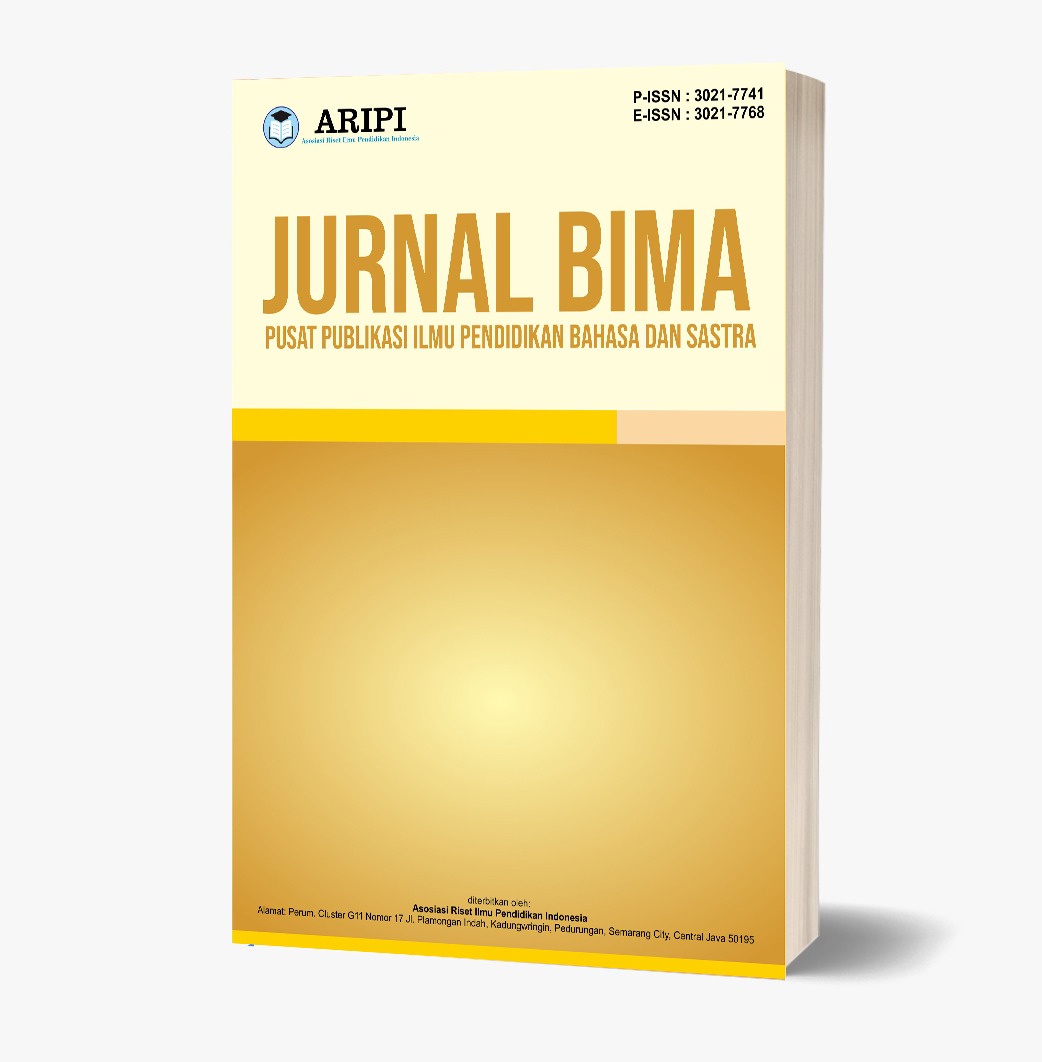The Correlation Between Students’ Critical Thinking And Their Speaking Skill
DOI:
https://doi.org/10.61132/bima.v1i3.107Keywords:
Correlation, Students’ Critical Thinking, Speaking SkillAbstract
This research aimed at finding out the correlation between students’ critical thinking and their speaking skill. This research used quantitative method and a correlational research design. The sample of this research was 20 students who were taken from XI class of students of PPS ULYA RUMAH QURAN NW LOMBOK in the academic year of 2023 - 2024. The sample was taken by Purposive Sampling Technique. The instruments of this research were questionnaire and public speaking test. The result of this research showed there is negative correlation between their critical thinking and speaking skill. Based on the data analyzed by using SPSS, the researcher found that the coefficient correlation was 0.128. Therefore the significance of students’ critical thinking and their speaking skill is at the rate of 0.590, which means the significant value smaller than 0.05 (0.590 > 0.05).
Downloads
References
Acharya, A. S., Prakash, A., Saxena, P., & Nigam, A. (2013). Sampling: Why and how of it. Indian Journal of Medical Specialties, 4(2), 330–333.
Ahmed, S. (2015). Attitudes towards English language learning among EFL learners at UMSKAL. Journal of Education and Practice, 6(18), 6–16.
Akoglu, H. (2018). User’s guide to correlation coefficients. Turkish Journal of Emergency Medicine, 18(3), 91–93.
As’ ari, A. R., Mahmudi, A., & Nuerlaelah, E. (2017). Our Prospective Mathematic Teachers Are Not Critical Thinkers Yet. Journal on Mathematics Education, 8(2), 145–156.
Facione, P. A., & Facione, N. C. (2013). Critical thinking for life: Valuing, measuring, and training critical thinking in all its forms. Inquiry: Critical Thinking across the Disciplines, 28(1), 5–25.
Gianfrancesco, M., Hyrich, K. L., Al-Adely, S., Carmona, L., Danila, M. I., Gossec, L., Izadi, Z., Jacobsohn, L., Katz, P., & Lawson-Tovey, S. (2020). Characteristics associated with hospitalisation for COVID-19 in people with rheumatic disease: data from the COVID-19 Global Rheumatology Alliance physician-reported registry. Annals of the Rheumatic Diseases, 79(7), 859–866.
Grandini, M., Bagli, E., & Visani, G. (2020). Metrics for multi-class classification: an overview. ArXiv Preprint ArXiv:2008.05756.
Heard, J., Scoular, C., Duckworth, D., Ramalingam, D., & Teo, I. (2020). Critical thinking: Skill development framework.
Idris, W., Ahmad, S., Balango, M., & Gorontalo, U. N. (2021). DEVELOPING STUDENTS ’ CRITICAL THINKING IN ENGLISH SPEAKING SKILL BY USING PROBLEM BASED LEARNING METHOD. Jurnal Normalita, 9, 279–280.
Kafai, Y. B., & Peppler, K. A. (2014). 12 Transparency Reconsidered: Creative, Critical, and Connected Making with E-textiles. DIY Citizenship: Critical Making and Social Media, 179.
Leong, L. M., & Ahmadi, S. M. (2017). AN ANALYSIS OF FACTORS INFLUENCING LEARNERS’ENGLISH SPEAKING SKILL.
Omona, J. (2013). Sampling in qualitative research: Improving the quality of research outcomes in higher education. Makerere Journal of Higher Education, 4(2), 169–185.
Paul, R., & Elder, L. (2019). The miniature guide to critical thinking concepts and tools. Rowman & Littlefield.
Shipley, K. G., & McAfee, J. G. (2019). Assessment in speech-language pathology: A resource manual. Plural Publishing.
Tavakoli, P., & Hunter, A.-M. (2018). Is fluency being ‘neglected’in the classroom? Teacher understanding of fluency and related classroom practices. Language Teaching Research, 22(3), 330–349.
Downloads
Published
How to Cite
Issue
Section
License
Copyright (c) 2023 Jurnal Bima : Pusat Publikasi Ilmu Pendidikan bahasa dan Sastra

This work is licensed under a Creative Commons Attribution-ShareAlike 4.0 International License.







